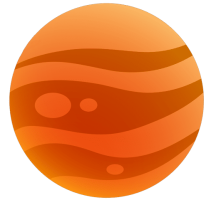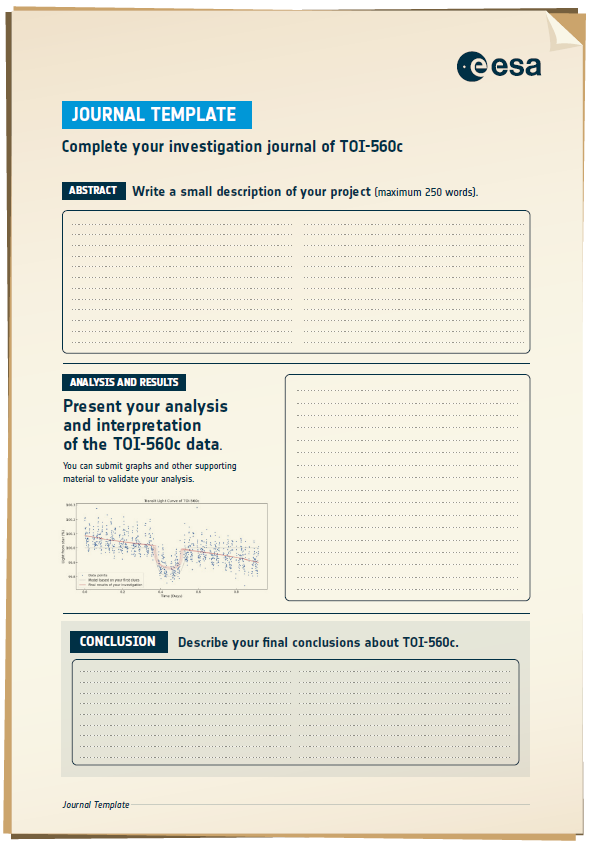
Brief description:
In this activity, students will characterise mysterious exoplanets by analysing data acquired by ESA’s Cheops satellite. Students will work as real scientists and fit a model to the data to retrieve the best fit parameters.
The activity can be completed using a guided format or in a project-based learning format, for example in a hackathon. The Educator Guide presents both options. The activities are complemented with video explanations prepared by exoplanet experts:
Learning Objectives:

Hot Jupiter
Recommended to start with this target!

Mini Neptune

Super Earth and Neptune-like Giant (exoplanet system)
For a chance to win the Best Project Prize teams should submit their scientific report about TOI-560c.
Your team’s submission should include your analysis of the Cheops data of TOI-560c, and it should follow the format of a scientific paper including an abstract, analysis and results, and conclusions.
The winning teams will receive ESA goodies, as well as the opportunity to participate in a webinar with Physics Nobel Laureate Didier Queloz, on 17 July 2023. Deadline for submission is 29 June 2023.
To submit your project, click here.

Your students can now become exoplanet detectives by analysing data from ESA’s Cheops satellite to profile two mysterious exoplanets. Follow this video for more information about the challenge and the materials available.